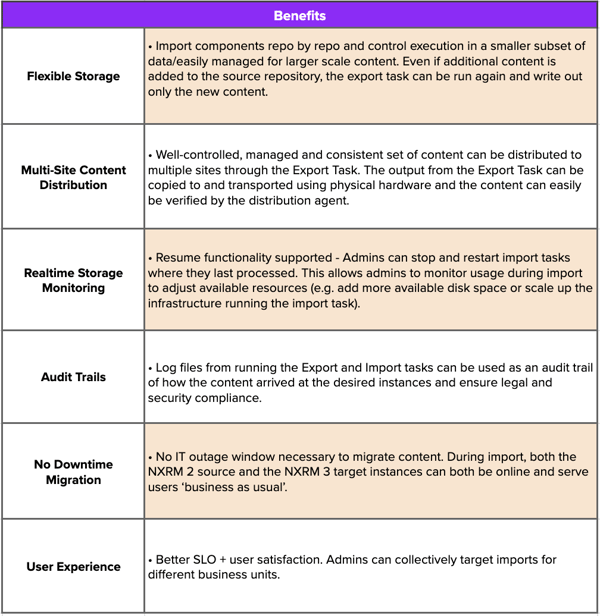New in Sonatype Nexus Repository 3.26, users now have an effective way to migrate components between two or more Sonatype Nexus Repository instances with the Import/Export feature. This latest release delivers Sonatype Nexus Repository Import and Export tasks with full support of all eight formats (Raw, Maven, NuGet, npm, Rubygems, Yum, Docker, and PyPI). Import/Export is available for Sonatype Nexus Repository users.
Storage management in Sonatype Nexus Repository is an important topic when scaling development throughput for any organization or team. How specific software components take up storage space, physical relocation of these components within Sonatype Nexus Repository, and understanding best practices for optimizing available storage once components are no longer needed are the three main areas of operations for running an efficient, scalable repository.
This is the first part of a new guided "Storage Management Best Practices" series. Diving deeper into Import/Export capabilities, we will focus on relocation and moving components within Sonatype Nexus Repository in this publication.
Modern Supply Chains and Repository Management
Organizations are working hard to keep up with faster rates of component creation from CI/CD and increased sizes of components from the shift in containerized deployments (e.g. multiple GB of new docker components being created every day). Managing repository content at the blob store level is important for storage, but what about the ability to move repository components between Sonatype Nexus Repository instances? These new supply chain trends, which lead to increased throughput of repository content, make it critical for teams to understand how to keep their repository components organized. Especially when organizations have several different repository manager instances in several different business units/departments.
Listed below are the three main use cases for Sonatype Nexus Repository Pro customers when moving components using Import/Export:
- Self-paced Migration from Sonatype Nexus Repository 2 to 3: Import Sonatype Nexus Repository 2 content from the file system directly to their Sonatype Nexus Repository 3 instance operating concurrently. This solves the issue of customers needing to decommission their Sonatype Nexus Repository 2 instances while not being able to use the in-place upgrade option.
- Consolidation of Sonatype Nexus Repository 3 repositories or instances: Consolidate the number of repositories or the number of Sonatype Nexus Repository 3 instances. Scenarios this use case can address include:
- Moving components from a slower instance to a faster instance
- Moving components closer to an instance of a newly formed development team
- Moving components from on-prem instance to a cloud-hosted instance
- Distribution of Components to Disconnected Instances: Distribute components between disconnected or remote environments. Scenarios this use case can address include:
-
- Air-gapped/disconnected environments with high-security protection and no network connectivity to what is normally available.
-
- Remote field environments that do not have a reliable and reliable internet connection. (e.g. offshore industrial locations, or remote research facilities).
Benefits of Using Import/Export with Sonatype Nexus Repository
The advantages of learning best practices for moving components with Sonatype Nexus Repository are the direct outcomes teams gain by using both the Import and Export scheduled tasks. Below is a chart highlighting customer benefits:


Additional Resources
For further release details and any questions, please refer to the links below:
-
Sonatype Nexus Repository 3.26 full release notes

Brent is the Director of Product Marketing connecting developers and DevOps communities to Sonatype Nexus tools and technologies.
Explore All Posts by Brent KostakTags

Try Nexus Repository Free Today
Sonatype Nexus Repository is the world’s most trusted artifact repository manager. Experience the difference and download Community Edition for free.